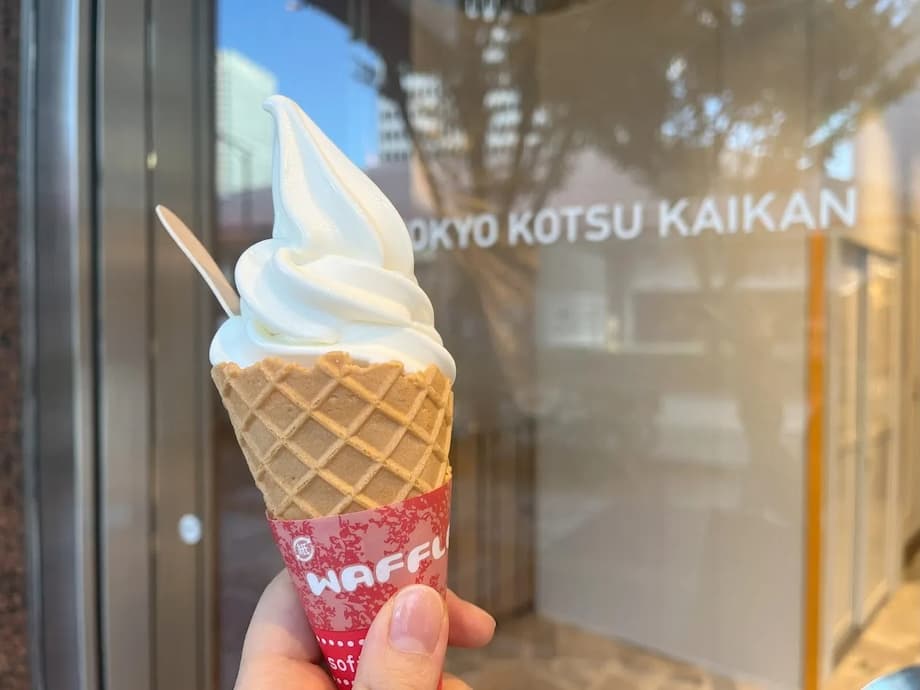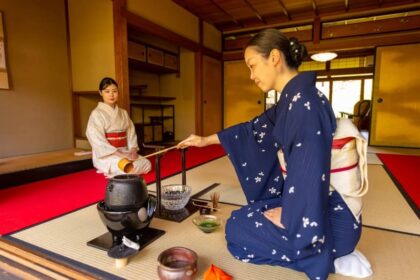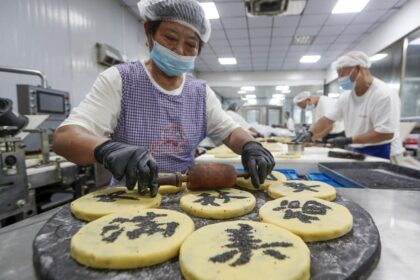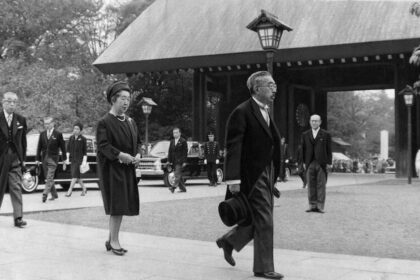Japan’s Regional Flavors Come to Tokyo: The Allure of Antenna Shops
For many travelers and food lovers, the dream of sampling Japan’s diverse regional delicacies often means embarking on a cross-country journey. But in the heart of Tokyo, a unique shopping complex is making it possible to enjoy the nation’s best local treats—especially ice cream—without ever leaving the city. Tokyo Kotsu Kaikan, located just steps from JR Yurakucho Station, has become a social media sensation for its remarkable collection of antenna shops, each offering a window into the culinary soul of Japan’s many prefectures.
These antenna shops are more than just retail outlets; they are cultural ambassadors, bringing the flavors, crafts, and traditions of distant regions to the capital. As summer heats up, Tokyo Kotsu Kaikan has transformed into a veritable ice cream paradise, with soft serve and frozen treats sourced from across the country. But what exactly are antenna shops, and why have they become such a phenomenon in Tokyo’s food scene?
What Are Antenna Shops?
Antenna shops are specialty stores established by local governments or regional cooperatives to promote their area’s products and culture in major cities, especially Tokyo. Originally conceived as temporary pop-up events in department stores, these shops have evolved into permanent fixtures, offering everything from rare sake and artisanal crafts to fresh produce and, increasingly, regional ice cream flavors. For residents and visitors alike, antenna shops provide a rare chance to experience the tastes and traditions of Japan’s 47 prefectures without the need for long-distance travel.
According to Voyapon, Tokyo’s antenna shops are particularly concentrated in neighborhoods like Ginza, Yurakucho, and Shimbashi, making them easily accessible for a day of culinary exploration. While these shops have long been popular with locals seeking a taste of home, they are now drawing attention from tourists eager to discover Japan’s regional diversity in a single outing.
Tokyo Kotsu Kaikan: A Nationwide Ice Cream Tour Under One Roof
Tokyo Kotsu Kaikan stands out as a hub for regional specialties, but this summer, it’s the ice cream selection that’s stealing the spotlight. The mall’s first floor and basement are lined with antenna shops representing prefectures from Hokkaido in the north to Okinawa in the south, each offering their own signature frozen treats. The experience is akin to a nationwide ice cream tour—minus the travel time and summer heat.
The Camembert Soft Serve from Niigata: A Cult Favorite
Among the most talked-about offerings is the Camembert cheese soft serve from Joetsu Myoko Yukiguni Shoten Niigata-shoku no Kura. This shop specializes in products from the snow country of Joetsu-Myoko, a region renowned for its rich food culture, sake, and dairy products. The Camembert soft serve, made with fresh milk from cows on Sado Island, is a revelation: creamy, subtly cheesy, and refreshingly light. It’s no wonder the shop reportedly sells over 1,000 servings a month, with many visitors declaring it a must-try for any ice cream enthusiast.
Store manager at Yukiguni Shoten explains, “Our Camembert soft serve is made using Sado Island’s raw milk and authentic Camembert cheese. The result is a rich yet delicate flavor that surprises first-time customers and keeps them coming back.”
Priced at 400 yen for a full-size cone and 300 yen for a mini, the Camembert soft serve is exclusive to this Tokyo location, making it a true hidden gem for those in the know.
Okinawa’s Mango & Beni Imo Soft Serve: A Colorful Fusion
Just next door, the Ginza Washita Shop Honten brings a taste of Okinawa to Tokyo with its Blue Seal Mango & Beni Imo (purple sweet potato) soft serve. Blue Seal is a beloved Okinawan ice cream brand, and this particular combination has become a social media darling for its vibrant colors and unexpected harmony of flavors. The mango is bright and aromatic, while the beni imo adds a gentle sweetness and creamy texture. Despite the richness of the sweet potato, the aftertaste is clean and refreshing, making it a perfect summer treat.
To order, visitors simply pick up a ticket for their desired flavor at the back of the store, then exchange it for a freshly swirled cone at the counter. At 440 yen, it’s an affordable way to sample Okinawa’s unique ingredients without booking a flight to the southern islands.
Hokkaido Dosanko Plaza: The North’s Dairy Delights
No tour of regional ice cream would be complete without a stop at Hokkaido Dosanko Plaza, also located within Tokyo Kotsu Kaikan. Hokkaido is famous for its dairy products, and the shop’s soft serve is no exception. Flavors like classic milk and melon are especially popular, praised for their creamy texture and natural sweetness. The shop also offers a range of other Hokkaido specialties, from cheese and yogurt to chocolates and baked goods, making it a favorite destination for both locals and tourists.
A recent visitor shared on TripAdvisor, “The soft serve here is incredibly smooth and not too sweet—just the way I like it. It’s a little taste of Hokkaido right in the middle of Tokyo.”
Hokkaido Dosanko Plaza is open daily from 10:00 AM to 8:00 PM, making it an easy stop for anyone exploring the Ginza or Yurakucho areas.
Beyond Ice Cream: Exploring Japan’s Regional Sweets and Breads
While ice cream may be the star attraction, Tokyo Kotsu Kaikan’s antenna shops offer a much broader array of regional treats. For those with a sweet tooth, the basement-level Yurakucho Hirado Shokan specializes in Nagasaki’s casdoce—a confection reminiscent of French toast, made by soaking castella cake in egg and coating it with coarse sugar. The result is a snack that’s rich but not overly sweet, with a texture more akin to a thick omelet than a traditional cake.
Another highlight is Godipan, the world’s first bakery from the Belgian chocolate giant Godiva. Located alongside the regional shops, Godipan serves over 30 varieties of bread, many featuring chocolate or local Japanese ingredients. Alternating between ice cream and freshly baked bread is a popular way to spend an afternoon at the mall, especially for those seeking a full culinary adventure.
Other Regional Specialties to Discover
The antenna shops at Tokyo Kotsu Kaikan represent a cross-section of Japan’s culinary landscape. Some of the other notable offerings include:
- Kanazuri-flavored snacks from Niigata, featuring a traditional spicy seasoning made with chili peppers, yuzu, and koji.
- Okinawan chinsukou cookies and beni imo tarts at Ginza Washita Shop.
- Hokkaido’s Royce Nama Chocolate and Rokkatei’s Marusei butter biscuit sandwiches at Dosanko Plaza.
- Rare local sake from Joetsu-Myoko, often unavailable elsewhere in the Kanto region.
Each shop is curated to showcase the best of its home region, with new products and seasonal specialties appearing regularly. For those interested in souvenirs, many shops also offer crafts, ceramics, and traditional goods alongside their edible wares.
Why Antenna Shops Matter: Cultural Bridges and Culinary Tourism
The rise of antenna shops in Tokyo reflects a broader trend in Japanese society: the desire to preserve and promote regional identities in an increasingly urbanized world. For prefectures facing depopulation or economic challenges, these shops serve as vital marketing tools, introducing their products to a wider audience and encouraging tourism. For Tokyoites and visitors, antenna shops offer a rare chance to experience the flavors and traditions of distant regions without leaving the city.
According to Time Out Tokyo, antenna shops are also important cultural spaces, providing information about regional festivals, crafts, and tourism opportunities. Some even host tasting events, craft workshops, and seasonal fairs, further deepening the connection between city dwellers and Japan’s rural heartlands.
As one cultural analyst notes, “Antenna shops are more than just stores—they are living museums of regional culture, offering a taste of home for those far from their birthplace and a window into Japan’s rich diversity for everyone else.”
Accessibility and Practical Tips for Visitors
While most antenna shops cater primarily to Japanese customers, English support is gradually improving, especially in larger shops and tourist-friendly areas. Credit cards are widely accepted, and many shops offer takeout options for those on the go. Tokyo Kotsu Kaikan is open daily, with most shops operating from late morning to early evening. The mall’s central location near Ginza and direct access from Yurakucho Station make it an ideal starting point for a day of regional food exploration.
In Summary
- Tokyo Kotsu Kaikan is a leading destination for sampling Japan’s best regional ice creams and sweets, all under one roof.
- Antenna shops bring the flavors and culture of Japan’s 47 prefectures to the capital, offering everything from Camembert soft serve to Okinawan mango and beni imo ice cream.
- Beyond ice cream, visitors can enjoy regional breads, sweets, sake, and crafts, making the mall a comprehensive showcase of Japanese culinary diversity.
- Antenna shops play a vital role in promoting regional identities and supporting local economies, while offering Tokyoites and tourists a unique cultural experience.
- Located next to JR Yurakucho Station, Tokyo Kotsu Kaikan is easily accessible and open daily, making it a must-visit for food lovers and cultural explorers alike.












